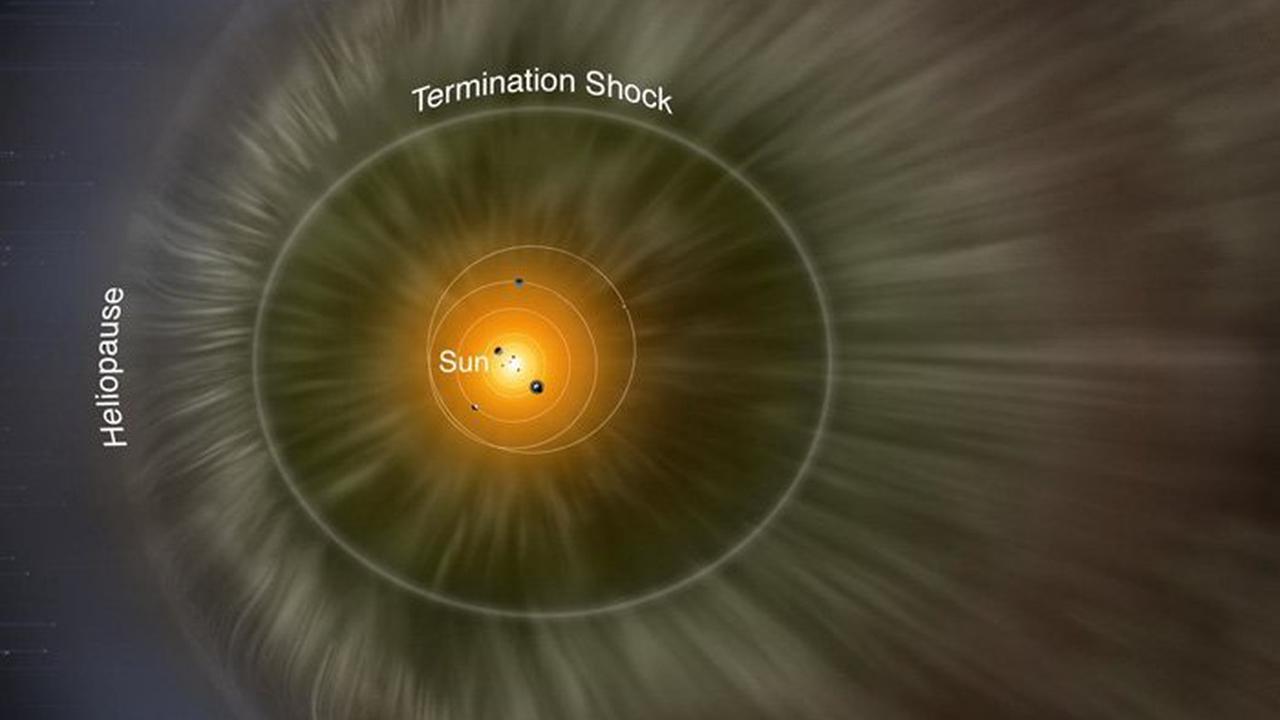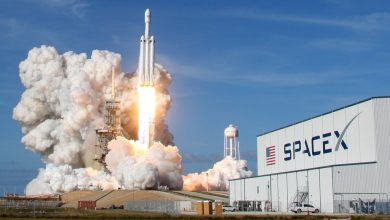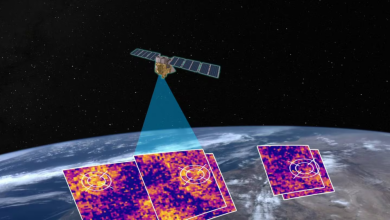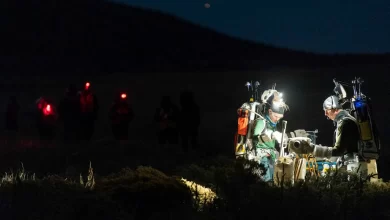Scientists Create First-Ever 3D Map of Our Solar System
وضع أول خريطة ثلاثية الأبعاد للنظام الشمسي
News Agencies
For the first time, astronomers have been able to determine the shape of the heliosphere, the boundary that marks the end of the influence of our star’s solar wind. This discovery could help us better understand the environment of the Solar System, and how it interacts with interstellar space.
“Physics models have theorized this boundary for years,” said astronomer Dan Reisenfeld of Los Alamos National Laboratory. “But this is the first time we’ve actually been able to measure it and make a three-dimensional map of it.”
Actually, we have had encounters with the edge of the heliosphere, a boundary known as the heliopause. Both Voyager probes, launched over 40 years ago, have encountered it and traveled past into interstellar space.
The heliopause is a fascinating place. The Sun is constantly gusting a stream of charged particles – a supersonic wind of ionized plasma – out into space. Eventually, the solar wind loses strength over distance, so that it is no longer sufficient to push against the pressure of interstellar space. The point at which that happens is the heliopause.
Interstellar space doesn’t have a great deal of material in it, but there’s enough that it does have a low density of atoms, and a cosmic wind blowing between the stars.
The shape of the boundary between the two has been a matter of some debate. Is it a rounded bubble? A comet-shaped structure, with a tail streaming behind the Solar System as it moves around the Milky Way galaxy? Or something a bit more like a strange croissant?
We can’t exactly just nip over and take a survey – Voyagers 1 and 2 were 121 and 119 astronomical units from the Sun respectively when they encountered the heliopause, and had taken decades to get there.
But that doesn’t mean we can’t take a look. Reisenfeld and his team used data from NASA’s Earth-orbiting Interstellar Boundary Explorer (IBEX) satellite, an observatory that measures particles flung from the heliosheath, the very outer region of the heliosphere.
Some of those particles are what scientists call energetic neutral atoms, or ENAs. These are generated by collisions between particles from the solar wind and particles from the interstellar wind, and the strength of their signal depends on the strength of the solar wind at the time of the collision – just like the wind on Earth, the solar wind doesn’t always blow at the same intensity.
Decoding this signal to map the heliopause is a bit like the way a bat uses sonar to map its physical surroundings. The strength of the signal and the time lag between sending and receiving can reveal the shape and distance of obstacles.
“The solar wind ‘signal’ sent out by the Sun varies in strength, forming a unique pattern,” explained Reisenfeld.
“IBEX will see that same pattern in the returning ENA signal, two to six years later, depending on ENA energy and the direction IBEX is looking through the heliosphere. This time difference is how we found the distance to the ENA-source region in a particular direction.”
The team used data from a full solar cycle, from 2009 to 2019. The map thus generated is still a little approximate, but it’s already revealing interesting things about the heliopause.
We now know, for example, that the shape of it (animated above) appears to be a bit comet-like after all, with a tail that’s at least 350 astronomical units long (that’s the current limit of IBEX’s reach), although the length of the tail is impossible to gauge. It could be short and stumpy. On the other hand, the minimum radial distance to the ‘nose’ of the heliopause seems to be around 110 to 120 astronomical units, consistent with the Voyager crossings.
At high latitudes, the heliopause extends to 150 to 175 astronomical units. This shows that the shape is more bullet-like, not at all consistent with the weird croissant model.
The IBEX mission is still going, and will continue until at least 2025. The Interstellar Mapping and Acceleration Probe is due to commence in 2025, picking up where IBEX leaves off.
The team hopes that both these missions will provide more data to help refine the heliopause’s shape.
قنا
واشنطن: تمكّن علماء فلك من مُختبر (لوس ألاموس) الأمريكي، من تحديد شكل الغلاف الشمسي للمجموعة الشمسية، مُشيرين إلى أن هذا الاكتشاف يمكن أن يساعد في فهم بيئة النظام الشمسي بشكل أفضل. وقال السيد «دان رايزنفيلد» عالم الفلك من مختبر لوس ألاموس: «إن النماذج الفيزيائية وَضعت على مدى سنوات حدودًا نظرية لمجموعتنا الشمسية، وهذه هي المرة الأولى التي نتمكن فيها بالفعل من قياسها وعمل خريطة ثلاثية الأبعاد خاصة بها». واستخدم رايزنفيلد وفريقه بيانات من القمر الاصطناعي التابع لإدارة الطيران والفضاء الأمريكية (ناسا) والذي يدور حول الأرض، ويقيس المرصد الجسيمات المُتساقطة من الغلاف الشمسي.




